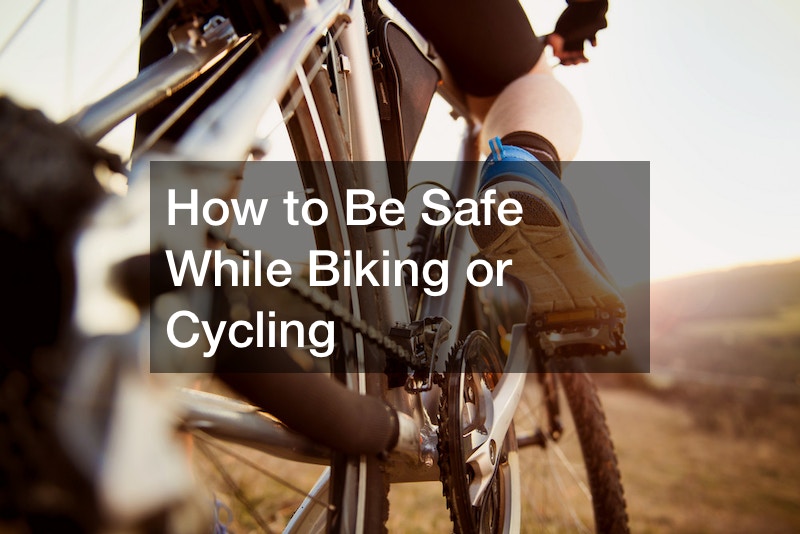

Children need to learn safe biking or cycling before they hit the age to move from riding their tricycles indoors or on the porch to a two-wheeled bike on the street. Although their first bike might feature training wheels, that’s far from all of the safety measures needed to keep them safe. Read on to learn the topics to cover before allowing your kids to ride the streets alone. We’ll also cover a few tips for older children and adults.
Choose the Right Type of Bike

When choosing a bicycle for yourself or your child, consider where it will be ridden. If your child will ride on city streets, they need a comfort bike, road bike, or hybrid bike. For off-road biking, choose a mountain bike, whether the terrain consists of gravel or dirt. Each type of bike uses a frame and tires designed specifically for a certain terrain type, so you’ll make navigating simpler and pedaling more comfortable, and use tires meant for the terrain.
Wear a Helmet
The best bicycle safety starts with the right attire. Always wear a bicycle helmet to protect your head. Like riding a motorcycle, on a bike, there’s no protective metal around a person’s body. If a vehicle strikes a person, or they hit a pothole and fly off of the bike, only a helmet protects them from the potential of traumatic brain injury (TBI).
Wear Long Pants and Long Sleeves
In summer, it might seem awful to wear long pants while biking, but it protects your legs from skinned knees and worse. Avoid road rash from wipeouts by wearing long sleeves and long pants year-round while cycling. Choose pants that close at the ankle or pin them, so they don’t catch in your spokes or chain.
Wear Appropriate Shoes

When children or teens bike, sneakers offer the most appropriate shoe choice. As cyclists age, they may purchase a more complex bicycle, such as a touring bike that features clips on the pedals. Wear cycling shoes that feature clips on the bottom with this type of bike, so your feet remain on and in the pedals.
Make Yourself Visible
When biking or cycling, especially in the early morning or evening, wear reflective material on your clothes. Whether you use tape to add a reflective stripe to the sleeves of your shirt and each pant leg or you wear a reflective jacket, your clothes need to signal your presence. Wear light colors like white, yellow, or light blue, so motorists can spot you easily. Young kids should remain in view of their homes to avoid personal injury.
Watch for Animals
When you ride a bike, whether you stay on the sidewalk or hit the road, you need to watch out for animals. There’s no pigeon control button to hit in real life, like in a video game. In rural areas, deer can run out in front of a cyclist, just as they do in front of an automobile. In cities and rural areas, dogs, cats, and squirrels regularly scamper across the street, making biking or cycling like a roller derby.
Remain vigilant, scanning the area in front of your bike and on the sides of it. Animals can dart out from behind trees or through bushes and grasses. Always maintain a speed that allows you to safely stop suddenly or swerve out of the way of the animal and any traffic. Always swerve away from traffic.
Keep Your Eyes In Front of You

It may sound incongruous to tell a young cyclist to look straight ahead and tell them to keep watch over the sides of the road while biking or cycling. Just as adults learn to scan the area in front of them while driving without swiveling their heads, children need to learn to do the same. Otherwise, in the city, they may miss automobiles smaller than a car or truck, such as loading dock equipment. In rural areas, tractors or combines turning onto a road or working on the side of it create the same need for vigilance.
Look Out for Pedestrians
When biking or cycling, beware of pedestrians, too. A person can cause an accident by jaywalking or darting out into the street. A cyclist who pays close attention to the road ahead, sidewalks, and crosswalks can more easily avoid striking a wayward pedestrian.
Just as auto drivers must look out for pedestrians, so should bicyclists. If an adult cyclist hits a pedestrian, they may need a criminal law attorney to defend them in a personal injury case. Practicing safe riding habits can alleviate many problems.
Watch for Road Hazards
By now, you probably think you will need eight eyes and a few mirrors on a bike to catch all the action while biking or cycling. There’s more to look out for, especially for children who are just learning to cycle and control the bike. Roads themselves create hazards from debris on them, potholes, cracks in sidewalks and roads, etc. Public works employees might conduct tree cutting or road surfacing in your area, so apprise kids of these workdays and explain how to carefully avoid danger in those areas.
Stay Away From Construction Sites
Both children and adults should avoid biking near construction sites. This can be tough in areas where the subdivision remains under construction. Most custom home builders clearly mark off their construction sites and then fence them off. When biking or cycling, avoid riding in these areas, regardless of your curiosity.
Stay Off Your Phone
As children become teens, many parents give them the gift of gab – a cell phone. Avoid talking on the phone while biking or cycling and teach your kids to do the same. This helps avoid wipeouts caused by improperly gripping the handlebars with both hands. Proper riding practices can help avoid accidents that result in chronic back pain.
Turn off your cell phone when you ride. Stash it in a bike bag that hangs on the handlebars or in a bag attached to the bottom of the bike seat. This keeps it handy if you need to call for a ride due to a sudden downpour, but helps eliminate the temptation of gabbing on it while you bike.
Watch for Dangerous Drivers
Although some cities provide designated bike lanes for biking or cycling, not all do. This leaves cyclists with a choice of biking on the sidewalk or the roadway. Some areas ban bikes from sidewalks, leaving only one option – the road.
Always ride with traffic, not against it. Rather than biking in the center of the lane, bike as close to the edge of the road as possible. Doing so allows you to quickly pull off the road and onto the shoulder or cut across the sidewalk to safety.
Watch for automobiles, especially those with drivers who are behaving erratically or driving recklessly. Although you have as much legal right to use the road as they do, when you spot a reckless or erratic driver, get off the road immediately. This vigilance can help you avoid needing to hire accident injury attorneys.
Wear a Body Cam
Wearing body cams might be a little out there for a kid, but teens and adults who go on long bike rides or who navigate dense traffic on their rides should wear one while biking or cycling. These small cameras can easily fit over a helmet or clip onto a shirt collar or sleeve. They provide a record of the ride that you can erase once you reach home safely and otherwise, you can use it as evidence in court if an accident occurs.
Maintain Your Bike

Proper bike maintenance begins the day you buy (or receive as a gift) your first bike. Install mirrors on the bicycle, similar to those on a motorcycle. The ones made for bicycles weigh less and use a streamlined design, but they eliminate blind spots, so you can better see what takes place all around you. When biking or cycling, this added help for vigilance can make a lot of difference to safety.
Add a light to the front center of the handlebars. This allows you to see and be seen at dusk and thereafter. Everyone runs late for supper at least once in life and a headlight helps keep you safe.
Bikes, like cars, trucks, SUVs, and vans, need a horn. With a bike, you can choose from a bell or horn to install on your handlebars. This small noisemaker lets you alert others on the road and pulling out of driveways to your presence aurally.
Install a bike bag instead of a basket. These small bags with zippered or Velcro closures let you stash cash, cell phone, and other small items safely while riding. Wear a backpack to carry larger items, such as lunch or a library book. Never try to carry something in your hand while riding.
Here’s one more thing to add to the bicycle – a water bottle holder. These nifty gadgets screw onto the bike frame and let you slip a water bottle in safely. It keeps your water bottle snugly in place and is easy to grab when you stop at a stop sign or red light. (Always stay hydrated while biking.)
Once a week, check the bike for chain wear, properly oiled parts, and brake response. Make sure the gears change easily and fluidly. Immediately make gear or brake repairs to keep yourself or your child cycling safely. Always check the bike before you ride it and fix any problems before you embark.
Know and Follow Traffic Laws
Both kids and adults need to know the traffic laws before riding on the street and follow them. This includes the hand signals for left and right turns, and stopping. Kids need to learn how to read streetlights, so they avoid riding through an orange or red light. Teach them about appropriate turning, too, before letting them bike on the road.
For essential safety in the U.S., always bike on the right side of the road. Keep at least three feet between the bike and automotive traffic when you must share a lane. Teach kids to always yield to crossing traffic.
Avoid passing or trying to overtake a motor vehicle on the right. If you need to circumvent a driver, get off the road and walk your bicycle down the sidewalk. Eventually, the vehicle will drive on, and you can rejoin the road traffic.
Avoid Biking in Extreme Weather Conditions
The term extreme weather does not refer only to thunderstorms and snowstorms. It also means heatwaves and freezing or colder temperatures. Riding in especially hot conditions can lead to dehydration or heat stroke while biking in very cold conditions can lead to frostbite or hypothermia. Kids can play another way in these dangerous weather conditions, one that keeps them indoors and safe.
If you typically cycle or bike to work or school, avoid doing so in extreme weather. Take an Uber, Lyft, cab, or bus instead to remain warm and safe. It isn’t worth the muscle cramps or other health issues just to say you biked. Ride an indoor bike instead to get your exercise.
Ride in Groups for Optimum Safety
Make yourself safer by riding in a group. Drivers of vehicles spot groups of cyclists more easily than a single cyclist. Riding in a group also means you have someone who can phone for help if something happens to one of you. Group rides also provide a buddy who can administer first aid if you cannot.
Tuck a First Aid Kit in Your Saddlebag
Cycling with a first aid kit prepares you for life’s little emergencies. Make sure it includes antibiotic ointment, anti-itch cream, bandages, elastic bandages, alcohol wipes, and pain relievers. Most pharmacies and convenience stores carry small kits that can fit in an under-seat bag.
Take General Health Precautions
Like any outdoor activity, you need to wear sunscreen while cycling. Choose a high SPF, such as 50 or 100, to best protect your skin from the sun’s rays. Wear sunglasses when riding during the daytime to protect your eyes from UV rays, too.
Start Biking!
Bicycling offers a fun exercise that lets you travel longer distances than walking. Kids adore riding their bicycles, so keep them safer by teaching them essential safety. Practice these safety tips yourself, so they follow your good example.
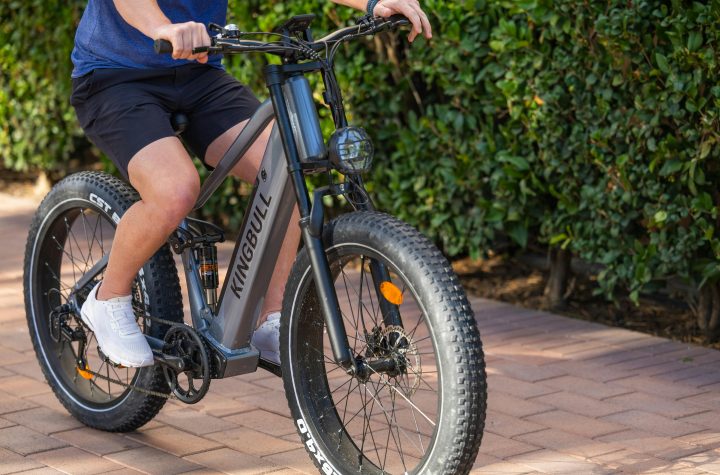
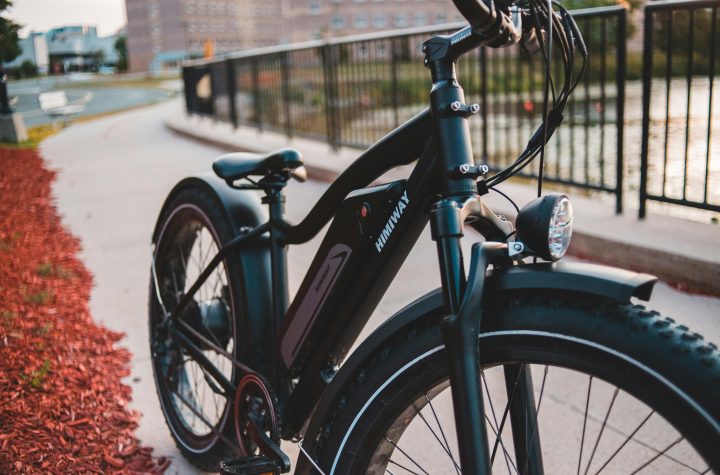
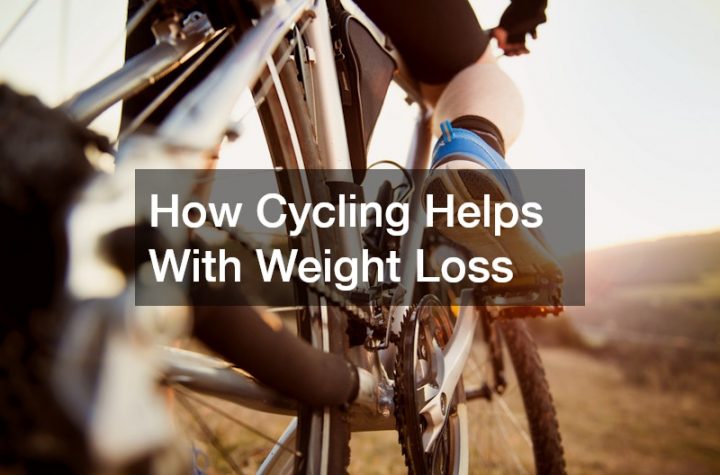
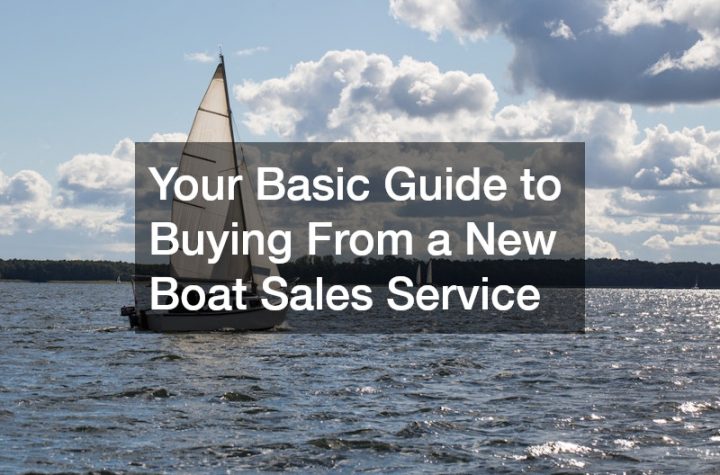
More Stories
How Cycling Helps With Weight Loss
Your Basic Guide to Buying From a New Boat Sales Service
Where to Get Ski and Snowboard Rentals